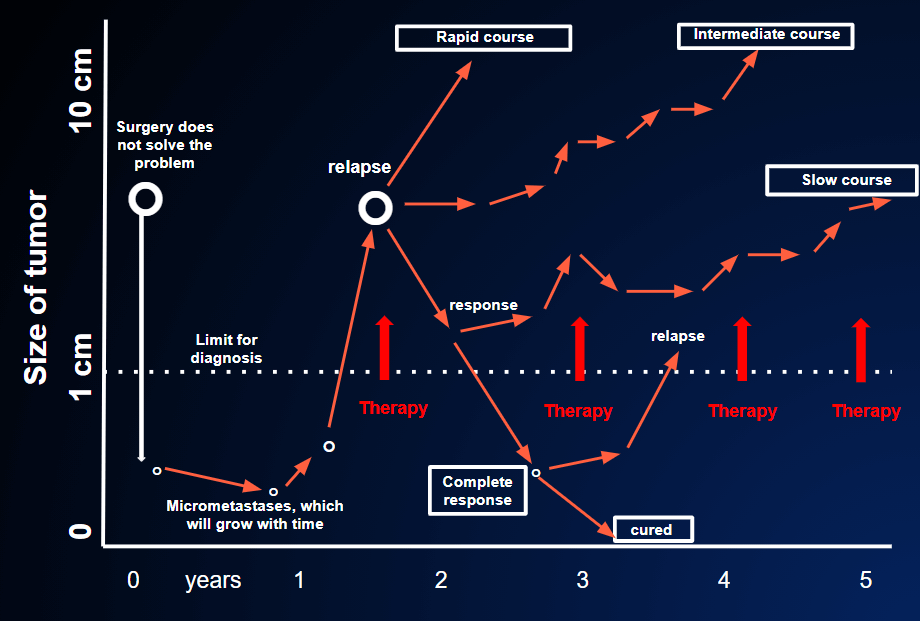When metastases are discovered, we only know that the situation has become worrying, and that cure is generally no longer possible. However, we cannot know how the disease will evolve from that moment on FIGURE 24.

- In some cases, albeit rarely, the disease takes a sudden and dramatic turn for the worse, and within 1-2 months the patient is in a terminal state.
- Very often, the disease progresses for 1-5 years before reaching the most advanced stage, when therapy no longer works.
- In other cases, the course of the disease is not very aggressive, and 5-8 years after the diagnosis, the patient still feels very well; the cancer causes little trouble and the outlook for the future is relatively calm.
- Finally, there also exists the possibility of a complete response (i.e. the therapy has proved particularly effective in that specific patient and the tumor gradually disappears). Unfortunately, however, even in these cases, the disease usually returns after some time; in some rare cases, the cancer no longer relapses, and after a few years the patient can be regarded as cured.
FIGURE 24 describes the various possible courses of the disease. At the beginning of the metastatic stage, it is wrong to try to make forecasts. Nothing is certain; we do not know how the disease will evolve during the first few months of therapy, and only time will tell. It is a mistake to try to guess how long the patient has left to live, just as it is a mistake to paint too optimistic a picture of the situation.
There are websites (https://www.mayoclinic.org/diseases-conditions/cancer/in-depth/cancer/art-20044517; https://www.mskcc.org/nomograms/) that provide estimates of how much time the patient has left. However, as these estimates are based on the averages of large series of case-records, they cannot readily be applied to individual cases. Here, we are faced with the old problem of averages; the average value may be 50, but the individual case may have a value of 1 or 100….Clearly, the average value is of little use.
